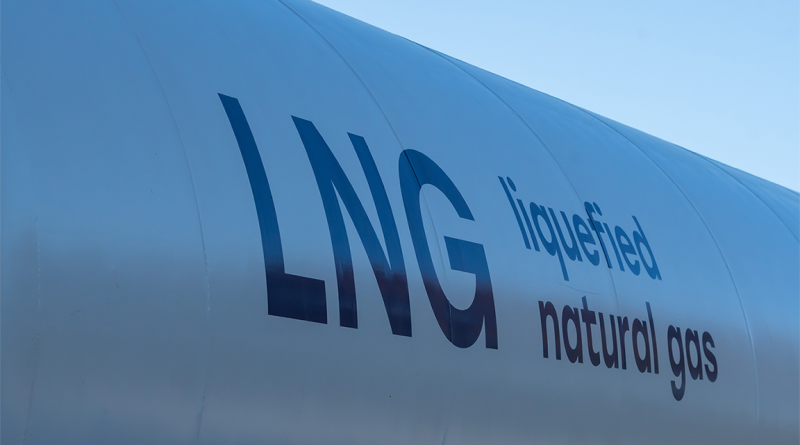Chinese LNG Giants Reroute US Gas to Europe and Asia
Subscribe to our free newsletter today to keep up-to-date with the latest energy, oil and gas news.
The liquefied natural gas trade between China and the United States is being reshaped by escalating tariffs. In early 2025, the US imposed a 10 percent tariff on Chinese imports. China responded with a 15 percent duty on US LNG, then announced additional levies that pushed the total to 34 percent. These measures have made direct imports from the US commercially impractical for Chinese companies.
China did not import any US LNG in March, despite being the world’s top LNG buyer. State-owned firms including Sinopec, CNOOC, Sinochem, and PetroChina are now redirecting cargoes under long-term contracts to Europe and other Asian countries. This strategic move allows them to avoid tariff penalties while recovering some contract value through resale.
China’s LNG imports dropped to 4.5 million metric tons in February, the lowest monthly total since April 2022. Domestic demand has softened amid a mild winter and slower industrial activity, which has further discouraged tariff-burdened imports.
Europe and Asia absorb diverted LNG at better prices
European markets have become attractive for Chinese sellers. Delivered LNG in Europe is priced around $12 per million British thermal units, compared to about $13 in Asia. In China, buyers are seeking spot LNG closer to $8 or $9 mmBtu to offset weak demand.
Because many Chinese contracts with US exporters include destination flexibility, firms can legally reroute cargoes without violating terms. This strategy turns national buyers into short-term traders, a shift that reflects the growing role of arbitrage in global energy trade.
In some cases, firms are breaking even or even profiting from resales. Others are minimizing losses by selling to buyers not subject to tariffs. The result is a steady flow of US-produced LNG entering global markets, just not through Chinese ports.
Long-term contracts come under operational strain
Chinese companies are trying to fulfill long-term obligations with US firms like Venture Global without taking physical delivery. These contracts, signed during earlier years of stable trade, now require renegotiation or creative rerouting.
Most US-China LNG agreements involve take-or-pay terms, meaning buyers must pay regardless of final delivery. This structure works under normal conditions but creates added pressure when tariffs raise landed costs.
To manage the issue, firms are activating third-party delivery clauses and diverting shipments to markets where the gas can be sold at a discount. The administrative and logistical effort involved has increased significantly, requiring tight coordination across ports, shipping firms, and legal teams.
US exporters are also feeling the pressure. Consistent redirection can disrupt financial planning and challenge project timelines for new terminals. If the trend continues, developers may struggle to justify future phases of investment that were originally modeled with Chinese demand in mind.
Geopolitics continues to shape energy trade flows
The rerouting of LNG is part of a wider pattern in global energy trade, where geopolitical tensions increasingly determine supply routes. China’s decision to reduce US LNG intake mirrors earlier moves to reduce coal imports from Australia and oil purchases from politically risky sources.
Europe’s pivot away from Russian pipeline gas after the Ukraine conflict is another example of this realignment. In both cases, trade shifts occurred not because of pricing or volume constraints, but because of political conditions.
With US LNG facing tariff barriers, China has increased interest in supply from Qatar, Malaysia, and parts of Africa. These alternatives are often more expensive or less flexible, but come with fewer policy risks.
Other countries are capitalizing on the disruption. Buyers in India, Southeast Asia, and Turkey are acquiring US cargoes originally destined for China, often at favorable terms. This has created new trade corridors and expanded market diversity in the short term.
Trade conflict raises questions about US LNG growth
The US became the world’s largest LNG exporter in 2024, shipping nearly 12 billion cubic feet per day. Its export model has relied on long-term contracts, robust infrastructure, and competitive pricing. But if trade barriers persist, further expansion could slow.
Chinese demand remains crucial to future growth. Its energy transition strategy includes a strong role for LNG, especially as it shifts away from coal. The loss of direct access to that market puts pressure on US exporters to diversify their customer base.
Regions like Europe and Southeast Asia offer some relief, but they do not yet match China’s scale or consistency. Europe, in particular, is investing heavily in renewables, which may limit LNG imports in the coming decade.
At home, the US LNG sector faces rising costs and policy scrutiny. Permitting delays, labor shortages, and climate concerns are already slowing development timelines. A sustained absence of Chinese demand could make new terminal projects less attractive to investors.
Some firms are adapting by reworking contract structures to allow more destination flexibility and reducing dependence on any one market. Others are increasing sales to intermediaries, who then manage risk by arbitraging across regions.
Conclusion
The breakdown in US-China LNG trade reveals how fragile global energy relationships can be. What once looked like a stable, long-term alignment has become a case study in how quickly commercial plans can unravel under geopolitical strain.
For now, the gas is still flowing. But it is flowing differently, and with new players involved. The question is whether this rerouting represents a temporary adjustment or a lasting change in how the world’s biggest economies handle their energy needs.
Sources:
